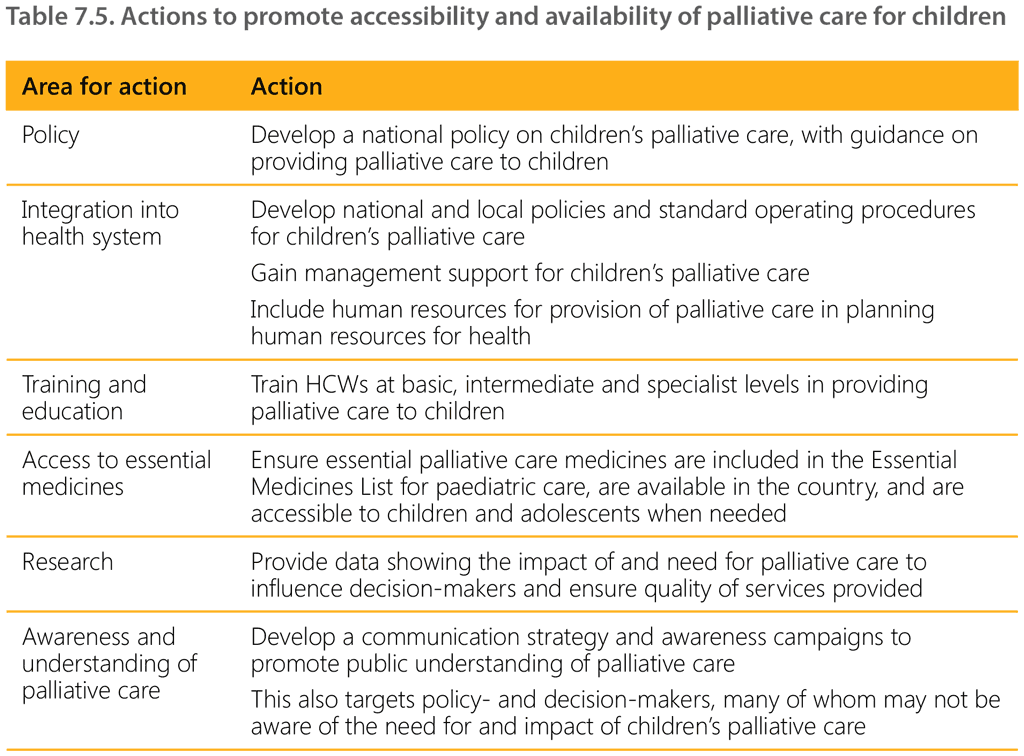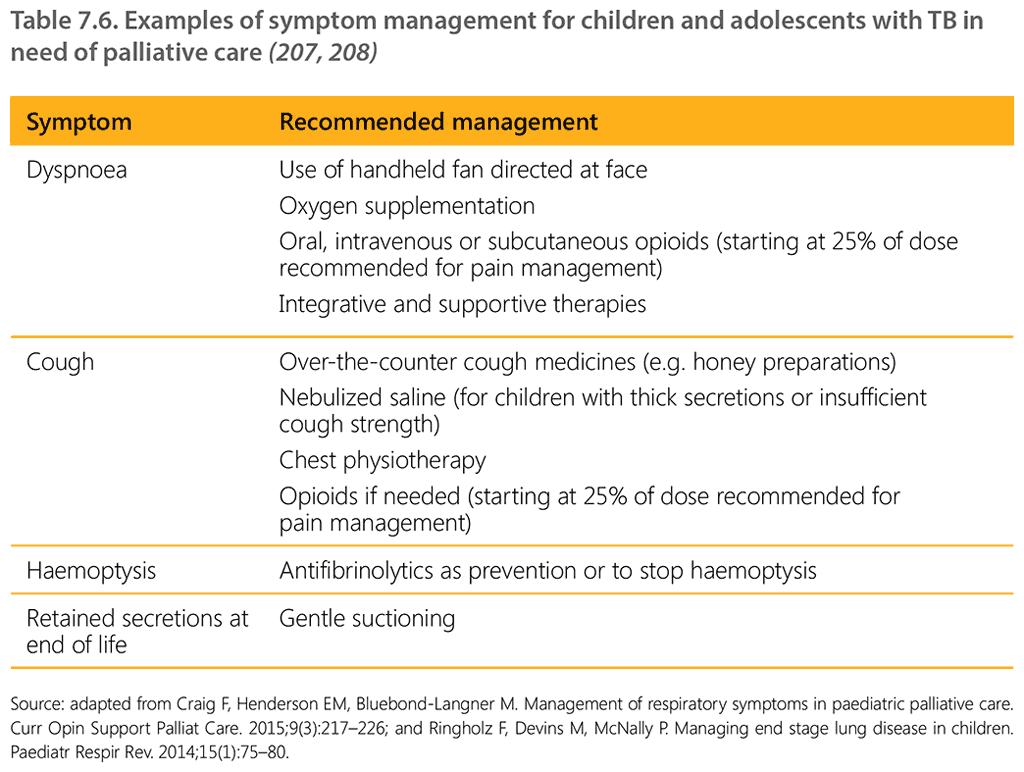Book traversal links for 7.3.3. Palliative care for children and adolescents with TB
Palliative care for children with TB is similar to that for adults, but applied to the specific needs of this age group. While the definition and principles of palliative care described above apply to the entire lifespan, paediatric palliative care requires attention to physical, developmental, psychosocial, ethical, spiritual and relational phenomena unique to children and their families and caregivers (203). The following should be considered:
- the child’s unique developmental stage and needs;
- the child’s specific communication needs (e.g. sensitivity to the child’s developmental stage and to language, culture and understanding of illness);
- the child’s dependence on adults;
- impact of the child’s severe illness on their family;
- different types of health conditions;
- need for paediatric formulations and dosing of essential medicines;
- degree of difficulty of clinical decision-making;
- requirements for the clinical environment (e.g. child-friendly, comforting).
The most common form of TB requiring palliative care in children and adolescents is DR-TB because it is associated with high morbidity and mortality. Pain, dyspnoea, nausea and vomiting are often the main physical symptoms, but stigma and isolation can result in social and spiritual pain. The family may need support to care for the child throughout the treatment period and to make preparations for end-of-life care if the prognosis is poor (204).
Integration of palliative care into existing services, such as those for children and young people with life-threatening and life-limiting illnesses, is deemed essential to improve accessibility to those who need it (204). The International Children’s Palliative Care Network stresses the need for integration of paediatric palliative care into child health services; inclusion of paediatric palliative care in relevant health, welfare and education policies; training and mentoring; and equitable access to pain-relieving and other medicines, including opioids (205). This is highlighted through the WHO conceptual model on strengthening palliative care services, which includes six components to support the development of palliative care services: supportive policies, empowered communities, research, training and education of the workforce, access to essential medicines, and integrated good-quality palliative care services (206).

Although respiratory symptoms in children with life-threatening conditions such as MDR/RR-TB or advanced TB disease are common and distressing, there is very limited evidence to guide clinicians in their management. Guidelines for the management of symptoms in palliative care for children and adolescents exist, but clinicians may need to be made aware of these and may need support in managing key symptoms (Table 7.6).

 Feedback
Feedback